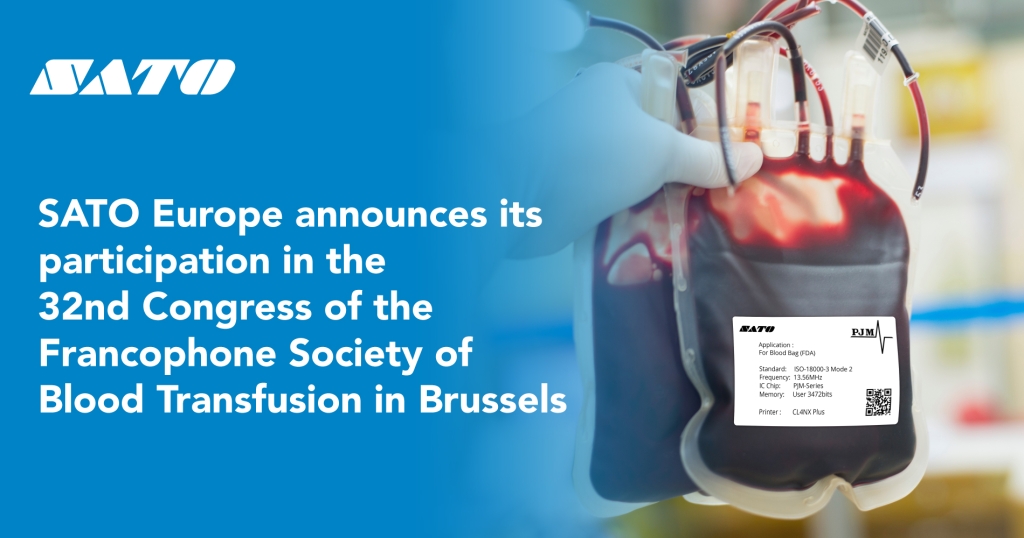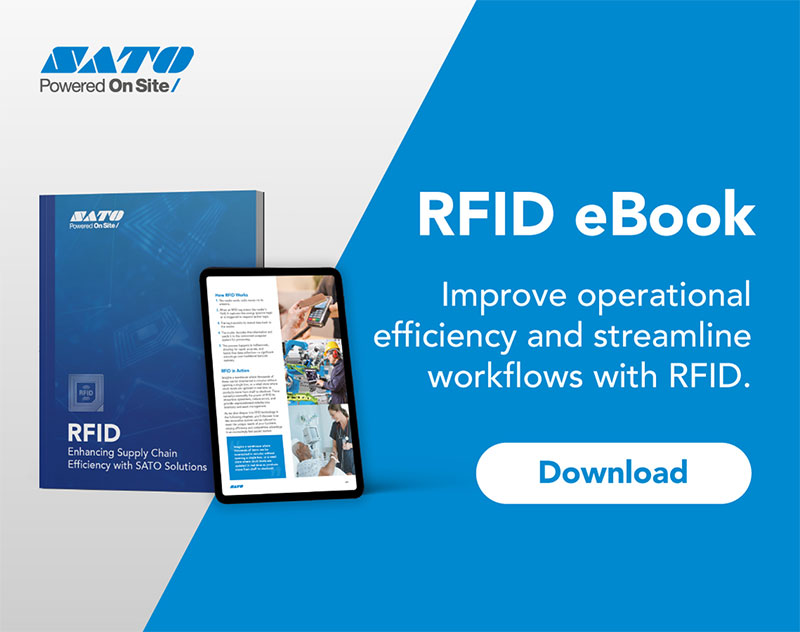Intelligent and platform-based 4.0 processes require intelligent ID printing technology to materialise data
12/10/21
by Eckhard Wernich, Product Management Solutions Manager at SATO Europe
Throughout the history of commerce, the supply chain has always needed to reflect the changing needs of the consumer that it ultimately serves. For system integrators and warehouse managers, this gives clear direction when developing and streamlining intralogistics, handling, subsystems and storage. By reacting to these shifting demands and understanding how intelligent printing technology can support, system integrators can uplift the supply chain and ultimately offer a better service to their clients.
One of the significant post-pandemic learning points for brands and the system integrators that they rely on has been that fuller and better-connected digitization of processes has been protective for business operations – not simply in terms of boosting speed, but in terms of maintaining output and volume under more restricted working conditions.
For system integrators, there are multi-layered benefits to intelligent ID printing and putting automation at the heart of warehouse layout and design. After all, collecting data in the supply chain is one thing, but that data needs to be visible, printed and available to effect real change. A digitized supply chain that embraces IoT in all aspects, connects workflows automatically, accurately and effectively and integrates intelligent label technology, can directly underpin the customer experience in a number of significant ways.
Quicker dispatch, slicker service
We’re living in the age of instant gratification – as more businesses adopt e-Commerce, the market expands, and consumers have more choice than ever before with their purchasing. Simply, if they can receive their purchase quicker from one brand over another, this informs their choice.
Crucially, as pricing strategies come into play and create more competitive retail categories, research from fleet solutions business Omnitracs LLC found that 65% of consumers chose to pay more for faster, more reliable deliveries. Further studies from delivery business GoPeople found that up to 88% of e-Commerce users select same day delivery if it’s offered. In essence, there are clear customer experience advantages to a faster and better-connected supply chain.
Using data to make smarter decisions
How warehouses and storage facilities are laid out is changing. Typical supply chain thinking puts item categories together – but is this still the most effective approach when it comes to time and efficiency?
A warehouse designed with customer experience in mind doesn’t necessarily follow this flow, it may instead use sales data to connect items commonly purchased together, regardless of their category or use. By doing this, brands could make significant cost and time savings over longer periods, which is invaluable in ensuring products reach the consumer quickly and efficiently.
Visibility for returns
Refunds are an inevitable part of retailing – particularly during the rise of e-Commerce where consumers cannot physically touch or hold the product before choosing it. How a business reacts to returned goods is an important part of the customer experience and could turn a potentially negative interaction into a great one.
For brands and system integrators looking to uplift and enhance operations, this relies on transparency, visibility and excellent tracking of the product journey. Doing so allows full oversight of returned goods and the relevant information, as well as simple reverse logistics tracking to batch origin, should further investigation be required. IoT technology is ideal for improving visibility, automating many of the processes that take time away from operatives.
Simple and efficient returns processes can make an enormous difference to how a consumer interacts with a brand and the experience generated – which means that a smart, connected warehouse can make a business more agile and customer-oriented.
Supporting System Integrators
As we consider what the warehouse of the future looks like, all signs point toward a connected facility that uses IoT technology to centre operations around the needs of the consumer – not only what works for the brand. With the need for supply chain transparency at the heart of facility design, intelligent labelling has an absolutely central role to play in not only collecting and storing data, but translating it into useful actions.
At SATO, we believe that integrated technology should be simple and value-adding at all points, whether it’s AI for decision-making, transparency and tracking or making effective use of resources.
Application Enabled Printing (AEP) is a powerful on-board intelligence that unlocks new heights of workflow and product transparency by making labelling technology versatile and customer-led. Integrated into supply chain design, AEP translates information from the data flow into measurable material actions and creates new operational efficiencies – exactly what brands need from their system integrators to galvanize an outstanding customer experience.
Just like smart devices and the PCs that store data, printers remain an essential component of the communication flow in an integrated supply chain. AEP enables bidirectional communication with internal and external IT systems, as well as cloud-based services. Status tracking, data acquisition and data sharing become simple with AEP, providing a versatile and proven solution for system integrators. The technology is fully integrated with IoT and Industry 4.0 principles of connectivity. This includes cloud integration, RFID and interconnectivity in networks.
At its heart, AEP unlocks slicker, more visible operations through the supply chain – with digitization and automation at the core. In turn, savvy system integrators can turn these advantages directly into a more pleasing experience for the consumer. It’s all about taking every opportunity to automate and make more effective use of resources and driving these operational gains along the entire supply chain to drive the consumer experience.
In summary, a supply chain that embraces digital automation combines benefits together to support and enhance the customer interaction, where each operation – every single movement - has a role to play. This is particularly important in an environment where a blockchain approach to data is more common, where every process and transaction can be connected. Data handling is key, and it falls to system integrators to create the right conditions for success.
Delivering an outstanding consumer experience is becoming a crucial edge for those brands able to harness it – but this doesn’t begin and end with the retail interface or brick and mortar stores. For real competitive edge, we need to look higher up the supply chain.
At SATO, we put the needs of system integrators at the forefront, allowing them to seamlessly meet the needs of their own corporate customers. Another great example is Visual Warehouse, the industry’s first wearable navigation system. Ideal for logistics centres, the technology combines barcodes and RFID with virtual 3D mapping and locating technologies to unlock heightened efficiencies, faster fulfilment and real-time awareness of inventory.
Warehouse designers and system integrators need to be asking if their workflow and layout is truly customer-centric and if it’s delivering the hyper-connectivity required to compete in a market that relies so heavily on loyalty, repeat purchase and word of mouth recommendation.
Latest News
All News

04/12/25
SATO Europe announces its participation in the 32nd Congress of the Francophone...
25th November 2025 – Templemars, France...

18/11/25
SATO obtains FSC® certification (FSC®-C207483) in France, reinforcing its...
SATO, a leading global provider of labeling and identification...












